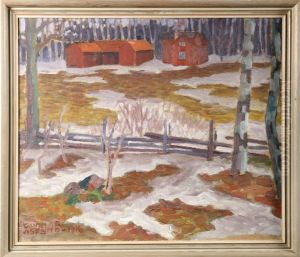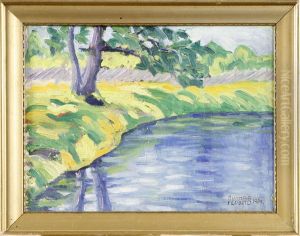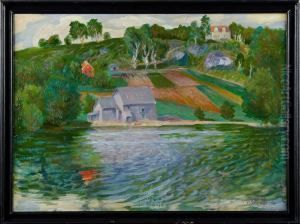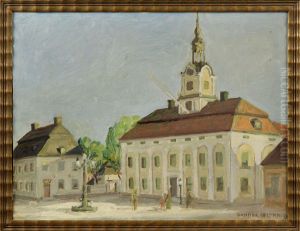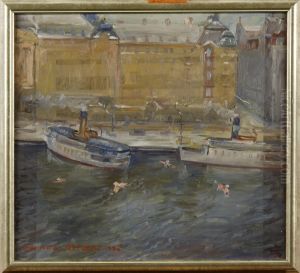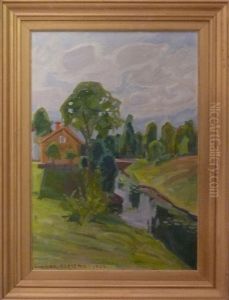Erik Gunnard Asplund Paintings
Erik Gunnar Asplund was a Swedish architect and designer, born on September 22, 1885, in Stockholm, Sweden. He is widely recognized as one of the leading figures in Swedish architecture and design during the early 20th century. Asplund's work is often associated with the development of the Swedish Grace movement, a Nordic interpretation of the neoclassical style, which later transitioned into functionalism, marking a significant shift in architectural design principles during that era. His contributions to architecture, urban planning, and furniture design have left a lasting legacy, influencing generations of architects and designers around the world.
Asplund's education and early work were deeply rooted in the classical architectural traditions, studying at the Royal Institute of Technology in Stockholm and later at the Royal Swedish Academy of Arts. His early career was marked by a series of collaborations with another prominent Swedish architect, Sigurd Lewerentz, with whom he worked on the design of the Stockholm South (Skogskyrkogården) Cemetery. This project, which began in 1915 and extended over several years, is considered one of Asplund's masterpieces, blending classical and Nordic elements with a modern sensitivity to landscape and materials. It was eventually recognized as a UNESCO World Heritage site, celebrated for its serene beauty and innovative design.
Throughout the 1920s and 1930s, Asplund's work evolved towards functionalism, particularly evident in his design for the Stockholm Public Library (1928), which is lauded for its clarity, simplicity, and functional beauty. This project marked a pivotal point in his career, showcasing his ability to merge classical elements with modernist ideals of form following function. Asplund continued to explore this dialogue between tradition and modernity, contributing significantly to the development of modern Swedish architecture.
In addition to his architectural work, Asplund made notable contributions to furniture design and interior architecture, often creating custom furnishings and interiors for his building projects. His approach to design was holistic, considering every detail from the scale of urban planning to the design of individual furniture pieces.
Erik Gunnar Asplund passed away on October 20, 1940, in Stockholm. His death marked the end of a prolific career that had a profound impact on Swedish architecture and design. Asplund's work continues to be studied and revered for its innovative approach to design, harmonious integration with natural landscapes, and thoughtful consideration of human scale and needs. His legacy endures, embodying the transition from traditional to modern design principles and inspiring future generations in the fields of architecture and design.

